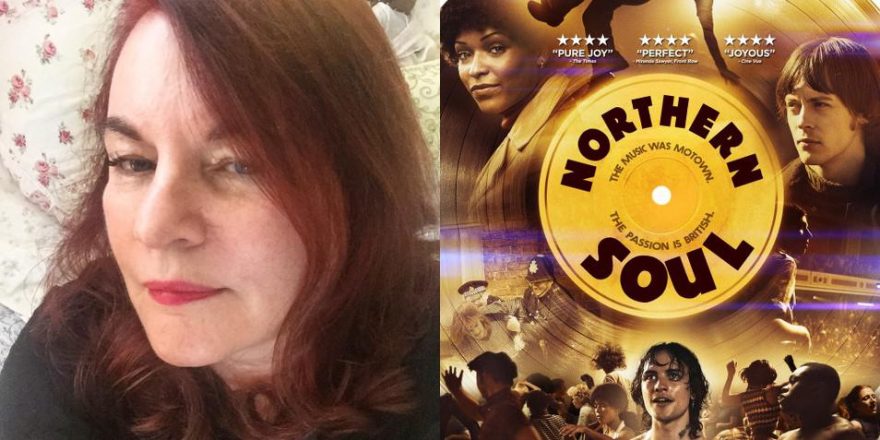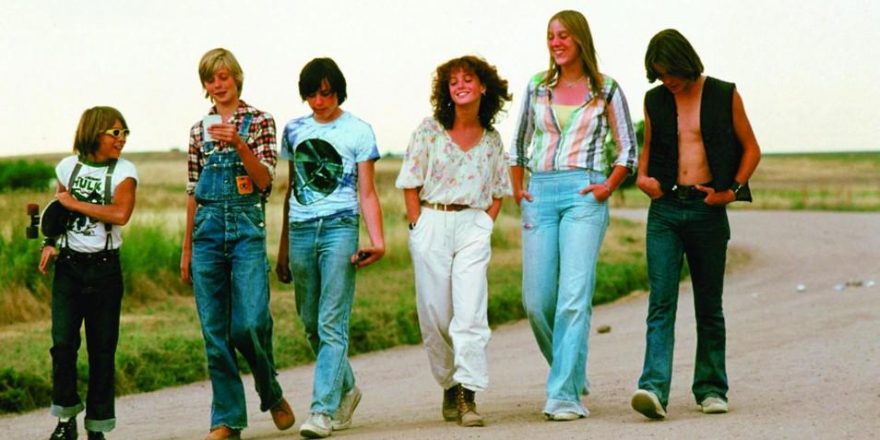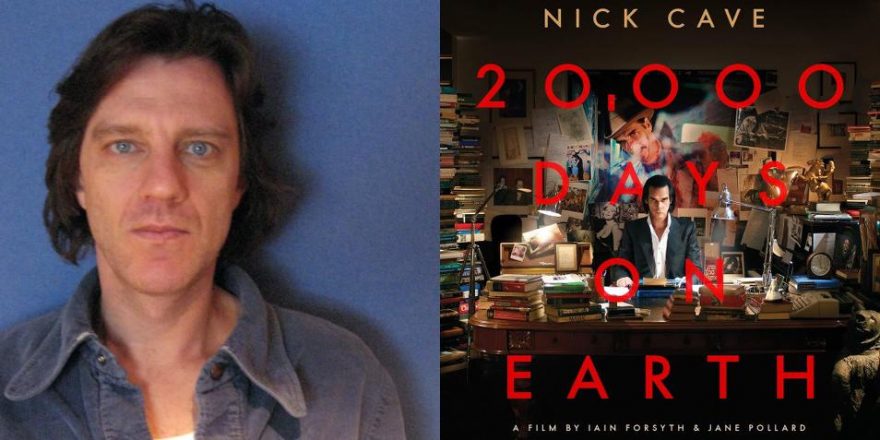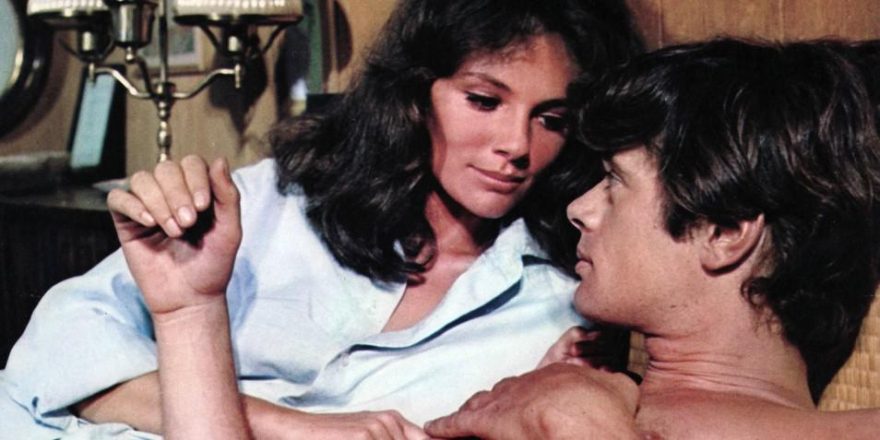I wanted to see Northern Soul by Elaine Constantine for two reasons: for the music and ’cause it was directed by a woman. I had no fucking clue I’d be introduced to a film which I will watch over and over again with the deepest pleasure for the rest of my life.
The third image of the film in the opening credits is the side of a building, where the words “Burnsworth is a Shithole” are spray painted. And that right there tells you plenty about the film you’re about to dance through, and not to the track you’re hearing (“Brand New Pair of Roller Skates” by Melanie, clearly a counterpoint to the underground scene we will discover in the film).
Northern Soul is set in fictional Burnsworth in Lancashire, England in, nope, not the ’60s when most of the soundtrack was recorded; no, not the ’80s, when most of the rest of the world learned the term “northern soul,” and its mecca, Wigan Casino, was already closing down. No, this film is set in 1974. When everyone was hairy and clothes were lackluster and dusty rose and brown.
Incredibly, I lived in England in 1974. And even more serendipitous, I’m writing an autobiographical script set in 1973-74. About a girl (me) living in the San Fernando Valley longing to get the hell out of Van Nuys, who saves her quarters waitressing for a ticket to London to reunite with an English boy she met on a Greyhound bus. And wouldn’t you know, in my script the main character refers to Hollywood as a “shithole” – why would anyone want to go there? Maybe the whole world was a shithole in 1974.
The radio certainly was. Shit, I mean.

Being young in the U.S.A. in 1974, well…we were a lost generation. We came too late to really be part of the hippy thing in the ’60s. We were like that annoying tagalong brother or sister, hoping to just grab the little shine left of the baby boomers’ glorious heyday. Instead, we got crappy music and even crappier clothes. And what’s worse, the hippies got to play out their idealism and we were left with the hangover remorse of their acid dreams. They got free love, we got the pressure of it without commitment. Life sucked and sucked hard.
In the U.K., it was no different. I was the same age at this time as the two main characters in Northern Soul, John (Elliot James Landridge) and Matt (Josh Whitehouse), who form the best bromance around a love of music that I’ve ever seen on film. There are moments of shared ecstatic joy over the opening notes of a 45 after the needle drop, which made my eyes spill tears of YES! along with the lads.
The simple story is about ineffective misfit John and charismatic troublemaker Matt. John’s not a great student and is hassled and humiliated by his asshole teacher (Steve Coogan, perfectly cast) and bullied by classmates. His parents don’t get him or what beats inside him and they make a decision that breaks his heart (his mum is played by R&B singer Lisa Stansfield; an inspired choice, as she’s terrific). John’s clothes and style are stuck in a vaguely mod past and he can’t get up the courage to even speak to a beautiful black nurse (Antonia Thomas) he often sees on the bus and is hopelessly smitten with. John flounders powerlessly in all areas of his life until he agrees to go to a youth club dance night and through happenstance meets Matt, a long-haired, tattooed, grimy post-hippy dude who takes over the turntable and puts on a soul 45rpm single then jumps down on the dance floor to dance alone to the beats as he tries to wind up the crowd. The music, Matt’s audacity and the evening’s turn of events change John’s life forever. The two become inseparable buds and set a number of goals together: score obscure northern soul 45s no one’s ever heard before, save up money to go to America to score more of these gems, and open a club of their own.
Most people don’t think of soul music when they think 1974, they think prog, Steely Dan, Loggins & Messina or maybe Bowie and Pink Floyd. But in England in 1974, and to a lesser degree in the States, the pop culture look-back had begun. Jac Holzman and Lenny Kaye released the original garage rock compilation Nuggets for Elektra in 1972 and the processing of rock & roll history as culture had begun. Depressed by what the airwaves were offering us, most of us went longing for a return to purer forms of rock, pop and soul.
In England two distinct camps took hold – “pub rock,” a return to ’50s basic rock & roll, producing, amongst others, Brinsley Schwarz (Nick Lowe and Ian Gomm’s band), and “northern soul,” so named because Northern England was where the music and dance culture was taking hold.

In 1973-74, I worked at the London venue for pub rock, The Hope and Anchor in Islington. Yep, that was me, the little American barmaid pulling pints during Watergate. It was the cheese and too-may-toe sandwiches which gave my accent away. “Your President’s in a lot of trouble, luv.” I never heard the end of it. But I was at the right place at the right time. Pub rock paved the way for punk and northern soul paved the way for ’80s and ’90s English dance culture.
You sense from the moment the film begins that Northern Soul was written and directed by someone who lived it. Which she did, sort of. Elaine Constantine was in the northern soul scene in Lancashire, but a decade after the story she’s telling. For many storytellers, a film or TV series offers this wonderful canvas to revisit a time we might have missed, but which calls to us. That’s what this filmmaker went for – and lucky us, we get to go with her.
What’s exhilarating about Constantine’s direction is the authority in it, both as a filmmaker and as a storyteller connected to every detail in her frame. You learn a lot about what matters to a director by looking at the end credits. Credited almost lovingly are the dancers, the dance teachers, the consultants on clothes and music – she took incredible care to recreate a time she had missed and longed to experience and know.
Constantine is a well-known photographer of young people, fashion and personal style in the U.K. Her photos are fresh, exuberant and raw, and her filmmaking is all that too. The camera in Northern Soul moves organically, and a lot, but it’s never imposing itself on the characters – the actors lead the camerawork, not the other way around. Yet Constantine doesn’t shy away from luscious wide frames of landscapes, or quiet moments of stillness, trusting the feeling to last in the stasis.
What kills a lot of films about music (well, besides the ludicrous and excruciating-to-watch inauthentic approach filled with clichés) is the SOUND MIX. (See what I did there – caps for LOUD.) Northern Soul has one of the best sound mixes I’ve ever heard on a film where the love of music is the drive. It’s a ride on its own. Gorgeous sound transitions between interiors and exteriors, from one track to another, and in one instance two tracks playing simultaneously: in a record store John and Matt listen to a soul record side by side in the coolest listening booths ever, which look like they belong on some carnival ride, while another Top 40 track plays in the store itself. The film is packed with great northern soul jams and the soundtrack offers up a staggering 53 tracks, all 7” mixes. That’s commitment to authenticity!
And in addition to the ace scenes on the various northern soul dance floors, Constantine also directs one of the great party scenes – up there with Cameron Crowe’s Say Anything (and any Blake Edwards party scene, for that matter). You may not realize what an accomplishment this is. As a filmmaker, I can tell you, it’s hard to crack. First of all, you must have enough people for the sequence, bringing back characters we have seen before and loads we haven’t. You have to show us the house by moving room to room, inside and outside, and show our various characters doing different things at various levels of reverie and drunkenness. And you have to give the sense of the cramped, loud space, and how the sound carries from room to room. Constantine does all of it while accomplishing the holy grail of party scenes: making us wish we were there.
About the actors, I cannot say enough. The transformative journey actor Elliot James Langridge takes John on is moving, sexy, deep, and we’re always right there with him. This was no easy challenge because Langridge had to take a shy, interior boy and bust him out of his shell on the dance floor in this new world where he slowly comes to belong, while still protecting that boy he was before and who still remains inside of him. As much as we love seeing him on the dance floor, there are quiet moments with him smoking which are just…dreamy. He smokes really well. I could watch him for days on end. And the fact that he looks like the Small Faces’ Steve fucking Marriott doesn’t hurt.
Antonia Thomas plays Angela, a beautiful, curvy biracial woman with a short, tight afro who is the girl John longs for. She is tender, tough, and has such a great backstory, one I heard a lot in England in ’74. I don’t want to give that away, but at one point she’s wearing this amazing dress which embodies all she is and the roots of the music they love so much.
Josh Whitehouse blows your mind, both on the dance floor and off in a riveting performance. He has one of the most charismatic on-screen presences in ages, and reminded me of seeing Heath Ledger for the first time.
OK, let’s just be honest – these guys are cute! My daughter Tiffany while watching Girlfriends by Claudia Weill on TCM’s Trailblazing Women series said, “You can tell a woman directed it ’cause the guys were cute.” And actress Illeana Douglas recently said how women direct sex scenes better. Well, it’s all true – we women directors cast cuter guys and we direct sex scenes better ’cause we actually direct them, we don’t just tell the actors to rip each other’s clothes off. Kissing and touching is involved. I could have used a little more foreplay in the sex in Northern Soul, but it was so beautiful, who cares? And hey, if I could have an endless loop of Elliot James Langridge’s flirty winking at Antonia Thomas – that’s foreplay enough for me.
Another terrific performance comes from Jack Gordon as Sean. Slightly older and definitely crazier than the lads, he’s the real deal. He reminded me at once of actor Alan Bates and of English record producer Dave Robinson, who lived above the Hope and Anchor pub when I worked there. Dave was the manager for Brinsley Schwarz and every day just before we closed the pub for the afternoon, he’d come down in his bathrobe for his pint of beer. I was told, “Dave is building a recording studio upstairs and he’s going to start a record label.” I couldn’t quite believe that: “Dave who doesn’t get out of bed till 2?” Well, that guy started Stiff Records.
I returned from England around the time this film ends, pregnant with my first baby, Tiffany, and the new chapter in my life as a teenage mom in the San Fernando Valley was richer and definitely cooler for the time spent in the U.K. during this seemingly culturally vacant year.
There are films, which try, oh they try so hard, to really care about records. But few really pull it off. Why is it always so unbelievable – even when set in a cool record store with big stars? I don’t know the answer, but I do know that I believed how much these records mattered to these characters by the way the actors held them, spoke about them, reacted to them when played for the first time and each time – we felt that music rule the souls of the characters. And in turn, rule the souls of us all.







